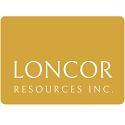Sponsor: Loncor, a Canadian gold explorer controlling over 3.6 million high grade ounces outside of a Barrick JV. The Ngayu JV property is 200km southwest of the Kibali gold mine, operated by Barrick, which produced 814,000 ounces of gold in 2019. Barrick manages and funds exploration at the Ngayu project until the completion of a pre-feasibility study on any gold discovery meeting their Tier One investment criteria. Newmont $NGT $NEM owns 7.8%, Resolute $RSG owns 27% Management owns 29% Click Here for More Info


“Investment appetite in the resources sector is low and investment hurdles have been raised which means that only the best investment jurisdictions, like the Democratic Republic of Congo, will receive much needed investment for growth.â€
This is according to Dr Tony Harwood, president and CEO of Montero Mining and Exploration.
“The slow-down in the global economy has depressed metal prices and the advent of the Coronavirus (COVID-19) has also exacerbated this, bringing many countries into a negative growth and some in recession,†Dr Harwood, who is also an ambassador for DRC Mining Week, continues.
In addition, the implementation of the new DRC mining legislation has caused concerns with existing investors and potentially new foreign investors to the DRC.
Despite these challenges progress made on some very exciting mining and exploration projects, notably developments of the world class Kamoa-Kakula copper project and Kipushi zinc project, notes Harwood.
“Other highlights for the DRC include the development of the high grade Bisie Tin project as well as seeing gold production being achieved at Kibali gold mine,†Harwood points out.
Positive approach needed
In addressing the challenges surrounding the country’s divisive mining legislation Harwood encourages current investors to discuss changes in a positive manner with government for an equally equitable solution for both parties.
Harwood believes the development of the Kamoa-Kakula copper project will open the Katanga province and encourage further exploration and development not only in this area but the country as well.
“Its success will aid greatly in the development of the DRC mining sector not only from a production perspective but also by increasing employment, skills transfers, taxes paid, infrastructure development both in the DRC and in neighbouring countries,†states Harwood.
Looking to the future Harwood is adamant good mining legislation with investor incentives will boost local capital and entice foreign investors will ensure growth and if the DRC gets this right it will become the largest mining economy in Africa.
Harwood founded and listed the company on the TSX Venture exchange. He is also a non-executive director of private and public companies largely operating in Africa. In all he has listed three companies over the last 10 years all of which operate in Africa from a base in Africa.
Between 2006 and 2009 he was the President and CEO of Africo Resources, a company attempting to develop a high-grade coper project in Katanga.
During the exploration and development period the company entered various cooperative community development programmes with local villages surrounding the project.
These programmes largely revolved around agriculture and the company assisted in setting up community co-operatives for growing vegetables to be sold to the company and the surrounding communities. “In addition, we also set up health screening initiatives with the DRC health administration in and around our project area,†explains Harwood.
“In 2007 to 2008 we also distributed 328 wheelchairs for children. These had been designed for use in the country and had thick rubber tyres – this brought children a new mobility and enabled them to get to school and participate in their communities,†he concludes.
Source: https://www.miningreview.com/base-metals/the-drc-should-become-the-largest-mining-economy-in-africa/











